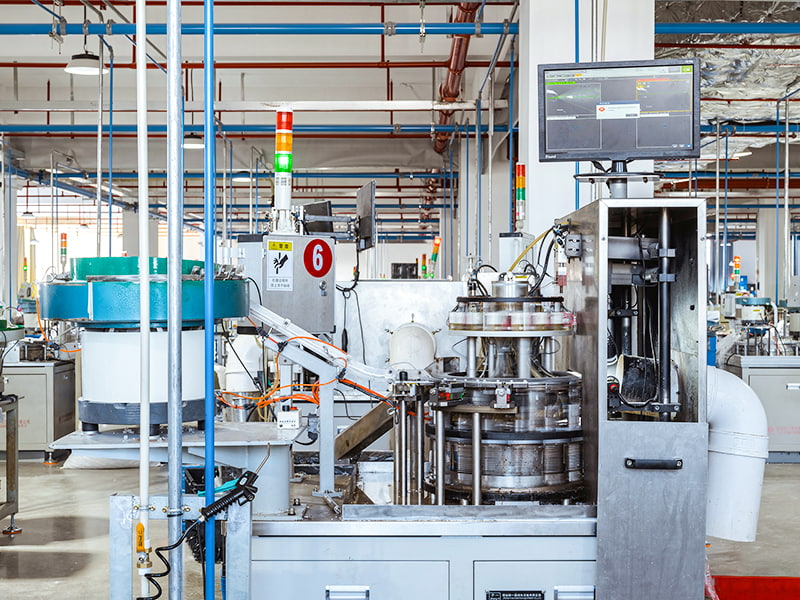Precise spray volume control is a cornerstone of efficiency and effectiveness in any application, from agriculture to industrial coating. The FEA15 Crimp Pump, renowned for its durability and consistent performance, offers several reliable methods to achieve the exact output you need. Mastering how to control FEA15 pump output volume is not just about turning a knob; it requires a fundamental understanding of the pump's operation and the interplay between its key components. This knowledge empowers operators to make informed adjustments that lead to optimal results.
XY-PT-⊘13CAMG 13mm Crimp perfume fine mist pump sprayer shorter type
At the heart of every FEA15 crimp pump is a reciprocating diaphragm. This component is responsible for creating the pressure and displacement that moves fluid through the system. The volume of fluid displaced per stroke (or cycle) is a fixed property determined by the diaphragm's size and design. Therefore, the primary way to influence the overall spray volume is by controlling how many of these fixed-volume strokes are delivered over a period of time.
While the pump generates the flow, the nozzle is the final arbiter of the FEA15 crimp pump spray pattern adjustment and volume. Nozzles are precision-engineered components with designated flow rates at specific pressures. Changing the nozzle is one of the most direct and effective methods for a significant and precise change in spray volume.
With a solid grasp of the underlying mechanics, we can now explore the practical methods for adjustment. There is no single "best" way; the ideal method often depends on your equipment's configuration and the desired level of precision. A systematic approach to adjusting pressure on FEA15 diaphragm pump systems and other parameters will yield the most reliable outcomes.
For air-operated FEA15 pumps, the air pressure supplied to the pump is the most common and readily adjustable variable. Increasing the air pressure causes the diaphragm to cycle faster, which directly increases the number of strokes per minute and, consequently, the total spray volume.
| Air Pressure (PSI/Bar) | Estimated Effect on Stroke Rate | Impact on Spray Volume |
| Low (e.g., 20-30 PSI) | Slower, deliberate strokes | Lower volume, heavier application |
| Medium (e.g., 40-60 PSI) | Moderate, steady strokes | Standard, recommended volume |
| High (e.g., 70+ PSI) | Rapid, aggressive strokes | Higher volume, finer atomization |
This is the most accurate method for achieving a specific, pre-determined FEA15 sprayer nozzle flow rate settings. It is highly recommended when you need a guaranteed and repeatable flow rate change.

Some mechanical or manual FEA15 pump models may offer the ability to adjust the stroke length or the motor speed. A longer stroke displaces more fluid per cycle, while a faster motor speed increases cycles per minute.
Adjusting the volume is only half the battle; maintaining a consistent output is crucial for quality and efficiency. Following proven tips for consistent FEA15 pump spray volume will ensure your adjustments are effective over the long term.
Several external factors can influence the output of your pump, even when the settings remain unchanged. Being aware of these allows for preemptive correction.
To ensure your adjustments are accurate, you must measure the output. The most reliable method is a simple timed volume collection test.
The flow rate of an FEA15 crimp pump is not a single number but a range that depends on its specific model configuration and operating conditions. Generally, these pumps are designed for medium-volume applications. A common output range for a standard FEA15 pump, when paired with appropriate nozzles and operating at typical pressures (40-60 PSI), can be between 0.5 to 1.5 gallons per minute (approximately 2 to 6 liters per minute). However, the most accurate way to determine the flow rate is to perform the calibration test described above, as it accounts for your unique setup, fluid properties, and system pressure.
Inconsistent spray volume from your FEA15 chemical sprayer pump is almost always a symptom of an unstable system. The most common culprits are fluctuating air pressure, a worn pump component, or a blockage. First, check that your air compressor can maintain a steady pressure and that your air regulator is functioning correctly. If the pressure is stable, the issue likely lies with the pump itself. A fatigued diaphragm or worn valve balls can cause irregular stroking and pressure spikes/drops, leading to volume inconsistency. Finally, a partially clogged nozzle or inlet filter can cause a pulsating, uneven spray pattern and volume.
While many standard sprayer nozzles have universal thread patterns (like 1/4" or 3/8"), it is not recommended to use "any" nozzle. The key to effective and efficient operation is selecting a nozzle that is not only physically compatible but also performance-matched to your FEA15 pump's capabilities. Using a nozzle with an excessively high flow rate can overload the pump, reducing its pressure and leading to poor atomization. Conversely, a nozzle that is too small can cause a dangerous pressure buildup within the pump and hoses. Always choose nozzles from reputable manufacturers that provide clear performance data, ensuring they operate within the safe and effective pressure range of your FEA15 pump.
Fluid viscosity has a direct and significant impact on the spray volume of a diaphragm pump. The FEA15 pump is a positive displacement pump, meaning it tries to move a fixed volume per stroke. However, highly viscous (thick) fluids like oils, adhesives, or some fertilizers create more internal resistance. This resistance makes it harder for the pump's valves to open and close quickly and for the fluid to flow through the system. The result is a reduction in the actual achieved flow rate and often requires an increase in air pressure to maintain the desired output. For consistent results with viscous fluids, it is essential to calibrate the spray volume with the actual fluid you will be using, not just with water.